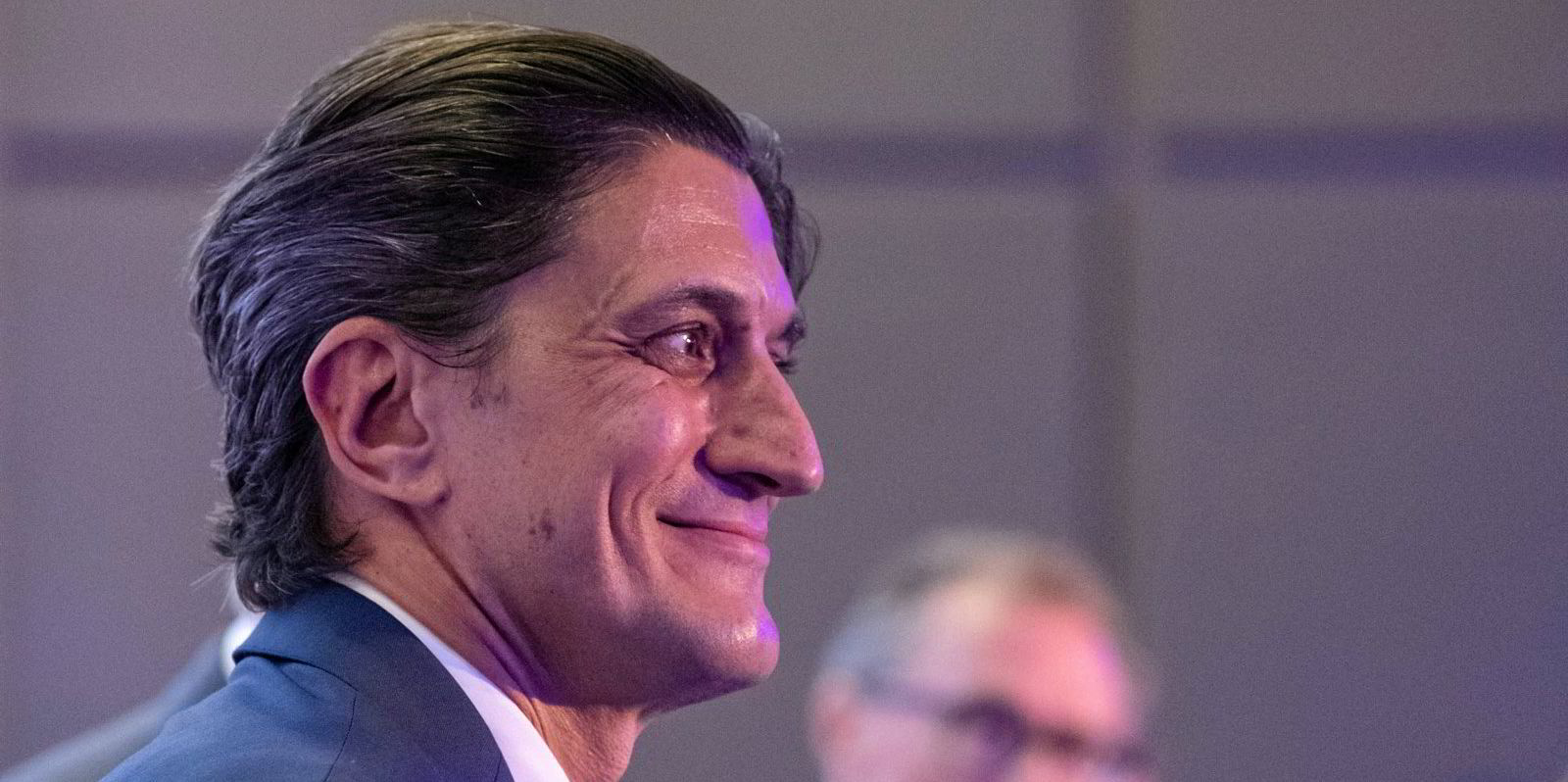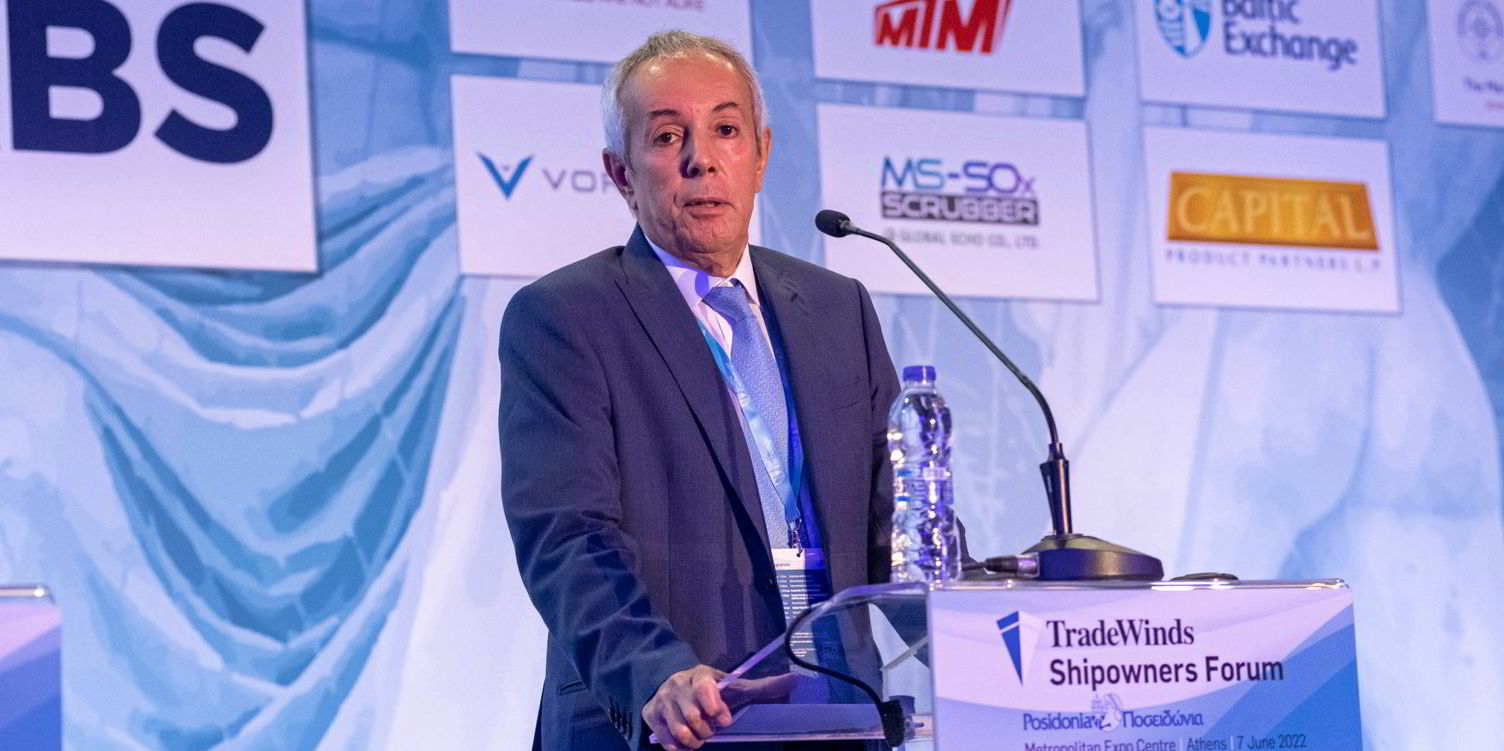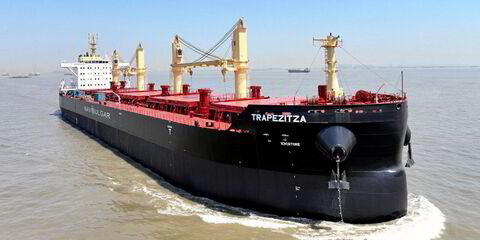There will be a GoodBulk comeback in the future and it could well make its way to public markets, according to its chief executive.
The former capesize owner completed selling off its fleet earlier this year and is returning all remaining cash to shareholders while it assesses its next steps.
CEO John Michael Radziwill told TradeWinds that GoodBulk would like to target another IPO in the future.
“Absolutely, that is something we are looking at,” he said.
Nothing is being ruled out. A listing could happen in New York, Oslo, Singapore or even London.
“Having said all of that, if we can’t get our pricing and it doesn’t make sense, we’re not going to do it,” he added.
“We are not hell-bent on having a more liquid share class. What we are hell-bent on is delivering maximum value for our shareholders and the two don’t necessarily go hand in hand.”
Things have a funny way of working out. GoodBulk’s IPO in New York in 2018 failed to launch because it was unable to achieve its targeted pricing. Since then, its shares have been listed on Oslo’s over-the-counter market, but trading has been thin because investors — being richly rewarded with dividends and distributions since 2018 — have tended to sit on them.
“I’m pretty happy that we stayed in this kind of structure. It made it a lot easier for us to carry out our mission of delivering value and getting rid of the residual risks,” Radziwill said.
“But now that we have built that track record — and this might not be so but we’re going to find out — we should be able to get better pricing in the public markets for the GoodBulk shares and the GoodBulk investors.”
The company, which is part of the C Transport Maritime Group, is not in any hurry. It has the backing of a loyal investor base, which includes the Radziwill family, and can afford to take its time.
“If we were to open the floodgates, we would probably have to cut back our investment money because there’s too much to place at the moment,” Radziwill said.
GoodBulk has confirmed it will continue to focus on dry bulk in the future, but that is the only firm direction for now. Right now, Radziwill sees the most value in the panamax and supramax segments, but said capesizes are starting to look promising again. Time will tell.
What is certain is that the future fleet will be sourced from the secondhand market or acquired as resales.
“We will not be ordering because three things are sure in life — death, taxes and John Michael Radziwill will never order another newbuilding,” he said.
“It basically comes to what we think the cheapest is and that’s a little difficult to gauge right now, especially more than it has been in the past, because you have a two-tier market appearing with more fuel-efficient ships versus older ships that are less efficient,” he said.
“With where bunkers are, with where the regulations are, that gap is probably going to widen.”
Another certainty is: GoodBulk wants ships that are cheap. And, in today’s market, “cheap” is relative to the cost of regulatory compliance, energy efficiency and capital.
“That cheap newer ship is probably going to end up cheaper than the cheap older ship, which is probably more expensive, because you’re going to have to retrofit, you’re going to have restrictions, et cetera,” Radziwill said.
Acquiring older ships will not necessarily be out of the question, even though the company is currently leaning more towards newer vessels. “There is a price for everything,” as Radziwill put it.
Cheapness is another reason that has led GoodBulk back to dry cargo after contemplating diversification.
“With dry bulk, the rates are not historically very expensive. Interest rates are going up, so your [cost of] capital is going up and asset values on that basis should become more attractive for us,” he reasoned.
The firm has considered buying ships in other segments, particularly tankers and LNG, but concluded that assets were too expensive.
“GoodBulk operates in investment cycles, so we want to take money in from investors — including ourselves, by the way — and then have a kind of book-end to the investment,” he said.
“There’s a start and there’s a finish; all the residual risk is done at the end. And then we sit and look for opportunities and look at the market again, when we think the time is right.”
Stone Shipping, the C Transport Maritime group’s supramax-focused investment vehicle, has its fifth cycle underway and is gearing up for a sixth, Radziwill told TradeWinds.
Stone V, the fifth joint-venture fund, is the biggest yet with around $20m of capital invested. Fundraising was completed in early 2023 and the fund is now "harvesting" returns.
“All the returns are still in double digits and higher than GoodBulk’s, frankly, so we’re very happy with that and we’re going to continue,” Radziwill said.
Funds raised for Stone Shipping’s 12-month-long investment cycles are deployed in chartering supramaxes and ultramaxes on index-linked or fixed-rate hire. These vessels are employed in CTM’s supramax pool or chartered out on fixed rates.
Returns are redistributed to investors via a profit-sharing agreement.
CTM aims to keep growing Stone Shipping at the same rate in its future investment cycles, doubling its capital base each time. If successful, this would mean its sixth iteration would target $40m when fundraising begins next year, as long as the group is confident that it can place the money properly and achieve good returns.
“We will — our desire and goal is to continue to grow Stone Shipping for many years to come because it’s also what we call an ‘all-weather’ portfolio. Stone can make money in a bad market or a good market, just by the way we trade it,” Radziwill said.
“We’ve found that, especially vis-a-vis Stone Shipping and other portfolio companies too, that if you make people money and actually put it in their pocket, you build a level of trust and those people will normally always be with you and will be more comfortable than they were the first time with you because you’ve done exactly what you promised them and they have the money in their pocket.”





